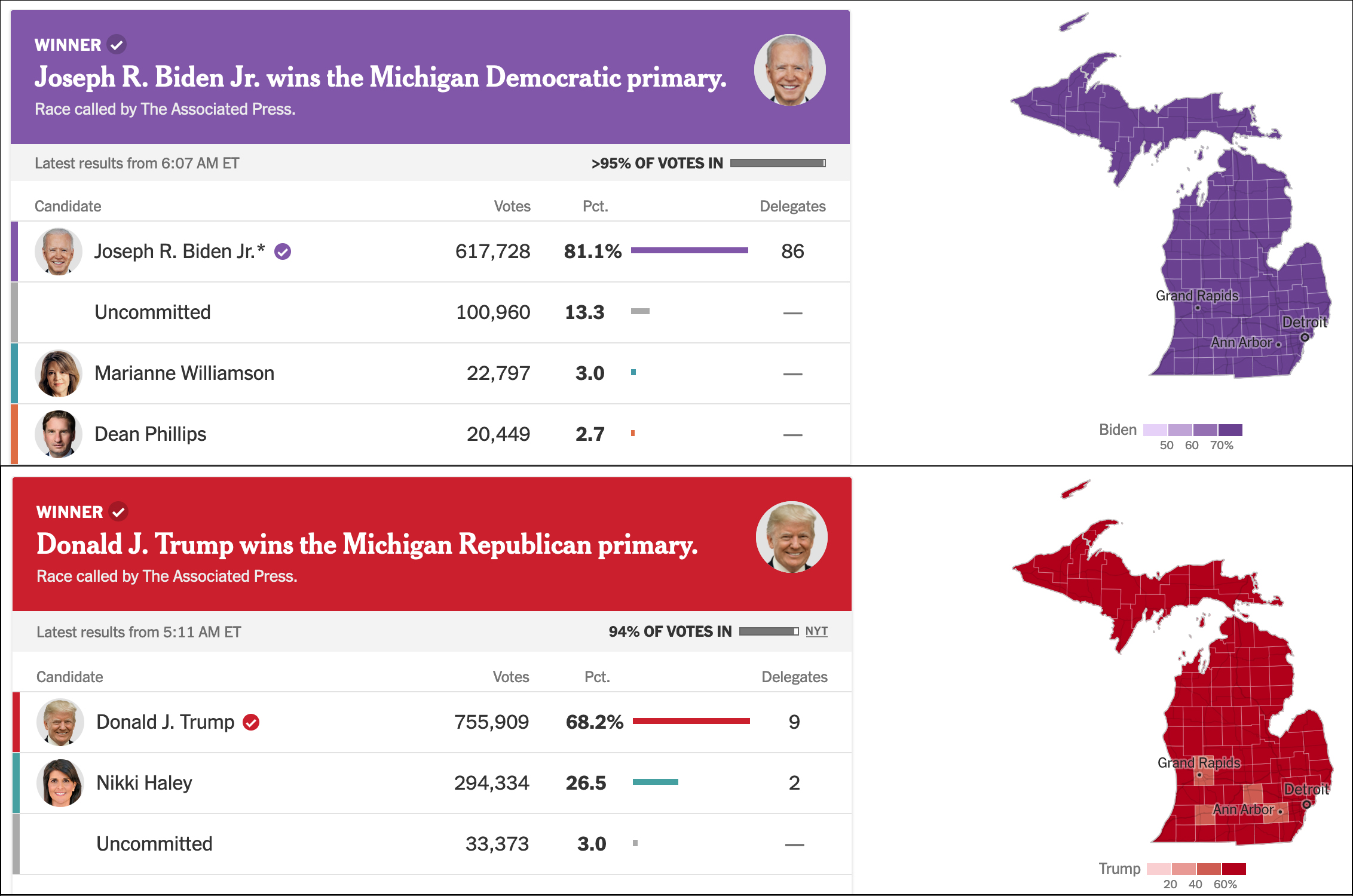By Jim Ellis — Monday, July 15, 2024
President
Polling Benchmarks: Pre-Trump Assassination Attempt — At the beginning today of the Republican National Committee, the nation is recovering from a near miss — Saturday’s assassination attempt on former President Donald Trump’s life. This, plus the traditional convention polling “bump” that typically helps the party nominee, should soon place the targeted Republican well ahead of President Joe Biden in national general election surveys, but how long will the momentum last?
We start by looking at the current polls, noting that all of the succeeding national surveys were taken prior to the assassination attempt. In five studies conducted during the July 7-11 period from five different pollsters (Fox News; NBC News; NPR/Marist College; ABC News/Washington Post; and Noble Predictive Insights) Trump is holding leads of between one and three points in the national ballot tests. It is from these points against which next week’s polls should be measured.
Senate
Wisconsin: Another Different Result — The Wisconsin Senate race polling had, for the most part, been stagnant for many weeks with Sen. Tammy Baldwin (D) holding a significant lead over GOP businessman Eric Hovde. In the past two weeks, however, a plethora of five surveys were released including the most recent poll report coming from North Star Opinion Research for the American Greatness organization. This study (July 6-10; 600 likely Wisconsin voters; live interview) sees Sen. Baldwin returning to an eight-point lead over Hovde, 49-41 percent.
In all, since June 18 to July 11, Sen. Baldwin has held leads as high as seven and eight points, but then slips all the way back into a tie with her Republican challenger before soaring again. Hovde led in none of the polls.
House
IL-11: Surprisingly Close — Illinois’ 11th Congressional District is an outer suburban seat located west of Chicago that begins in the Crystal Lake region to the north and moves south to include the cities of Naperville and Aurora. The FiveThirtyEight data organization rates the seat as D+10, while the Dave’s Redistricting App statisticians set the partisan lean at 51.8D – 43.4R. President Biden carried the district in 2020 with a 57-41 percent margin. Eight-term Rep. Bill Foster (D-Naperville) won his only race under the redistricted 11th CD with a 56-44% margin.
Therefore, it is surprising to see little-known music school founder Jerry Evans (R) already trailing by only a 41-34 percent margin according to a Cygnal poll (July 2-3; 309 likely IL-11 general election voters; live interview & text) conducted for the Evans campaign. It is these types of polls currently surfacing that show competitive races developing in what should be safely Democratic seats that are largely the reason behind so many House Democrats coming forward to call for President Biden to withdraw from the race.
Governor
Delaware: Dead Heat Dem Primary — Candidate filing for the open governor’s race closed last week, and already we see a dead heat developing before the Sept. 10 Democratic primary. Slingshot Polling (conducted for the Citizens for a New Delaware Way Super PAC; July 5-9; 446 registered Delaware Democratic voters) forecasts a 27-27 percent tie between Lt. Gov. Bethany Hall-Long and New Castle County Executive Matt Mayer with National Wildlife Federation president Collin O’Mara only reaching the seven percent support mark. The Citizens for a New Delaware Way is an organization attempting to defeat Hall-Long.
Democrats will hold the position in the general election, so winning the open Democratic primary is tantamount to claiming the state house in November.






